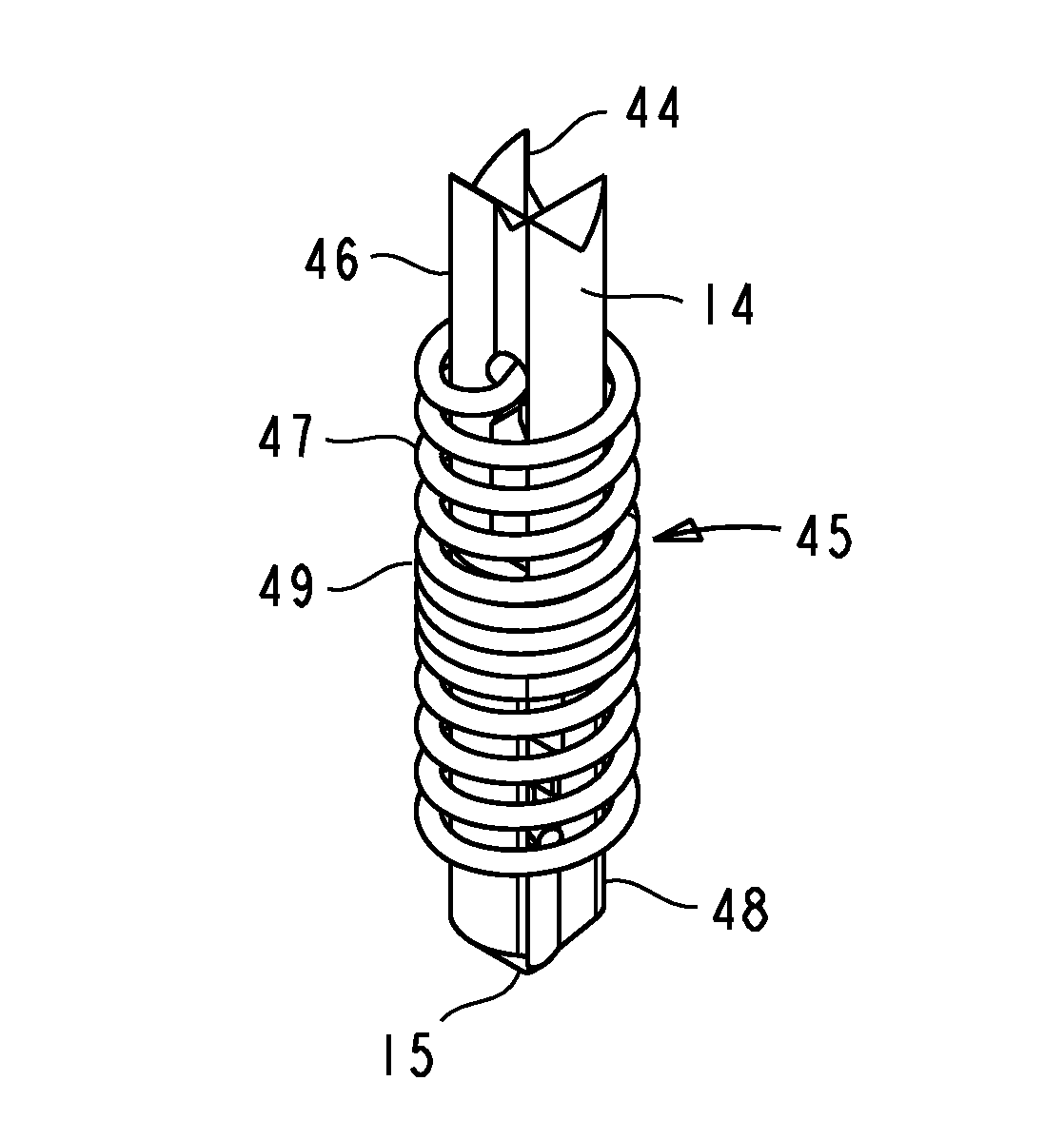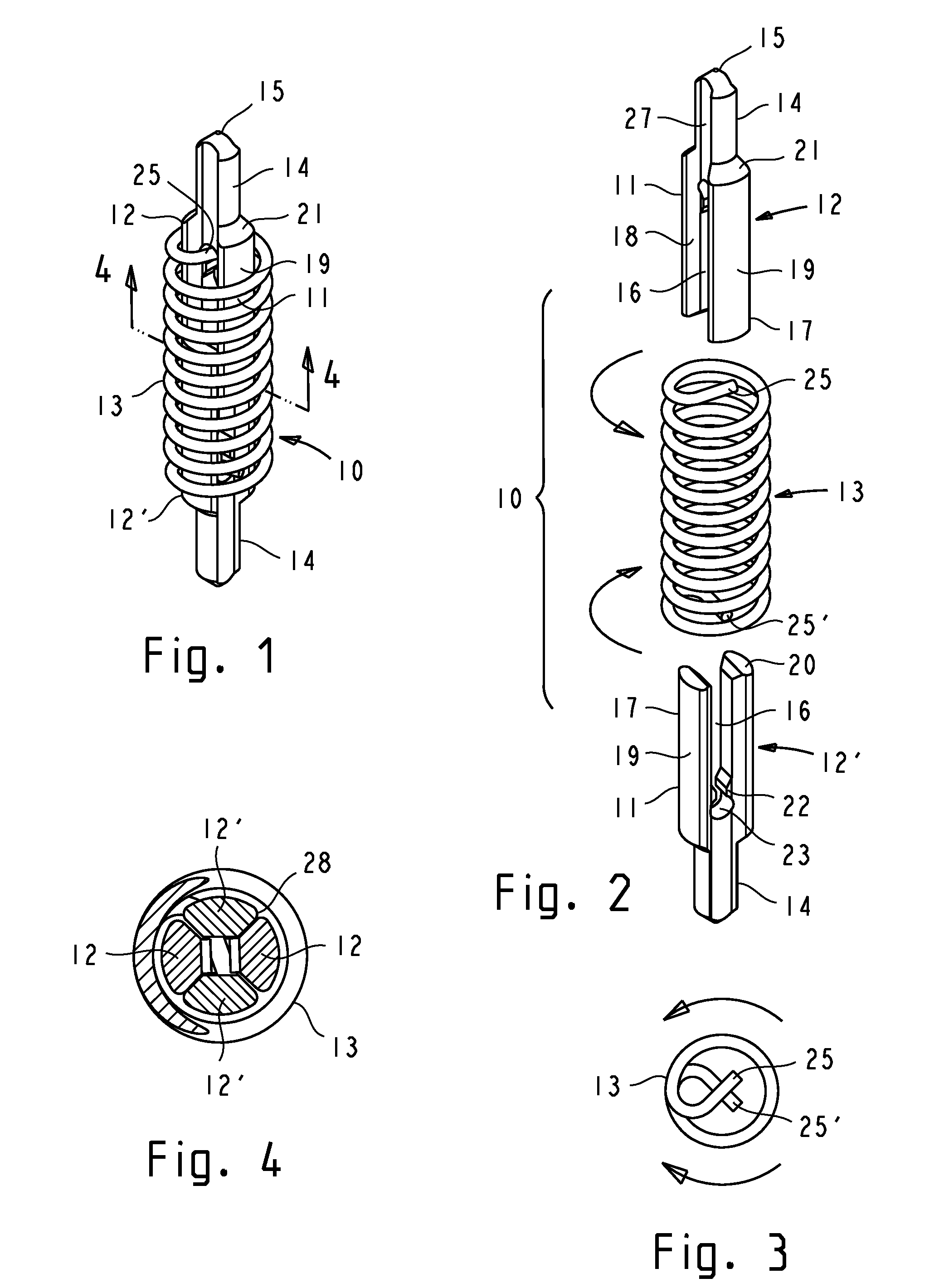Low inductance contact probe with conductively coupled plungers
a plunger and contact probe technology, applied in the field of low inductance contact probes, can solve the problems of premature contact probe failure, accelerated wear of contacting surfaces, and reduced overall contact resistance of the probe, and achieve the effect of substantially reducing the parasitic electrical effect of the spring
- Summary
- Abstract
- Description
- Claims
- Application Information
AI Technical Summary
Benefits of technology
Problems solved by technology
Method used
Image
Examples
Embodiment Construction
[0077]The contact probes disclosed are of the type that are primarily used in an interposer type connector, wherein each contact is compressibly interposed between opposing terminals of a first device and a second device. “First device” and “first array” will generally refer to the device that is being plugged or connected whereas “second device” and “second array” will generally refer to the next level device or hardware to which the first device is being disengageably connected, usually represented by a PCB. The “first plunger” is disposed to contact the first device and is shown on the top side of the contact probe drawings, whereas the “second plunger” is disposed to contact the second device and is shown on the bottom side of the contact probe drawings. Otherwise, a contact probe can have identical, interchangeable plungers and the devices can have identical terminal pattern (e.g., LGA pads). In the cases where the plungers are identical or have substantially similar features, ...
PUM
| Property | Measurement | Unit |
|---|---|---|
| Angle | aaaaa | aaaaa |
| Force | aaaaa | aaaaa |
| Angle | aaaaa | aaaaa |
Abstract
Description
Claims
Application Information
 Login to View More
Login to View More - R&D
- Intellectual Property
- Life Sciences
- Materials
- Tech Scout
- Unparalleled Data Quality
- Higher Quality Content
- 60% Fewer Hallucinations
Browse by: Latest US Patents, China's latest patents, Technical Efficacy Thesaurus, Application Domain, Technology Topic, Popular Technical Reports.
© 2025 PatSnap. All rights reserved.Legal|Privacy policy|Modern Slavery Act Transparency Statement|Sitemap|About US| Contact US: help@patsnap.com



